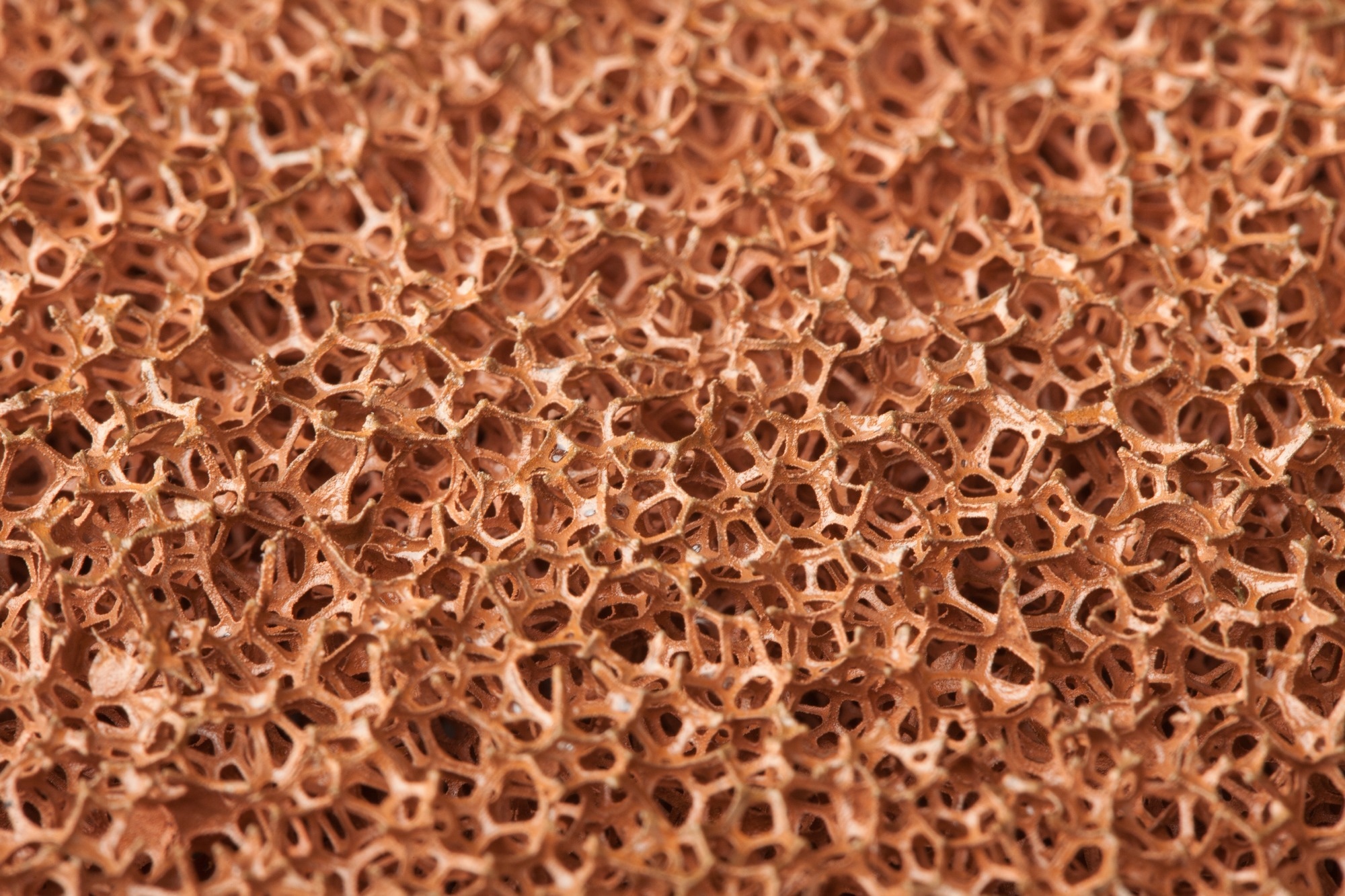A recent article in the Journal of Energy Storage investigated the impact of non-linear porosity distributions in copper foam on the thermal performance and melting behavior of palmitic acid, a phase change material (PCM). The study used the enthalpy-porosity approach and a local thermal non-equilibrium (LTNE) model to analyze positive and negative porosity gradients in the x and y directions.

Image Credit: Contentino/Shutterstock.com
Background
Latent thermal energy storage (LTES) systems using PCMs are effective for energy storage and temperature regulation due to their ability to store and release heat at nearly constant temperatures. PCMs absorb or release energy during phase transitions, but their low thermal conductivity limits heat transfer efficiency.
Incorporating metal foams improves PCM thermal conductivity but reduces storage capacity and increases system costs. Gradient porosity in metal foams offers a potential solution, yet the effects of non-linear porosity distributions on thermal performance remain underexplored. This study numerically analyzed the impact of such porosity gradients on temperature uniformity, melting behavior, and overall thermal storage efficiency of a PCM.
Computational Methods
The study modeled a two-dimensional (2D) 100×100 mm2 cavity filled with palmitic acid as a PCM and embedded within porous copper foam. Alongside a baseline uniform porosity (UP), the effects of porosity gradients—both positive and negative in the x and y directions—were analyzed. The left wall of the cavity was held at a constant temperature, while the remaining walls were thermally insulated to investigate the influence of porosity distributions on thermal performance.
The phase change characteristics of palmitic acid were analyzed using Differential Scanning Calorimetry (DSC). The phase transition peak, phase transition interval, and latent heat of fusion were derived from the charging curve.
The enthalpy-porosity approach was used to simulate the melting process of the PCM. The LTNE model accounted for heat exchange between the PCM and the copper foam ligaments. Heat transfer between the phases was represented using a convective term to enhance modeling accuracy.
The transient phase change process was simulated using the Finite Element Method (FEM) through COMSOL Multiphysics 6.1 to solve the equations governing the system. The accuracy of these numerical results was examined relative to previously reported experimental results for a 100×100×10 mm3 enclosure of paraffin‑copper foam composite with 97 % porosity.
Results and Discussion
The porosity gradients in different directions had varying effects on the thermal performance of palmitic acid. For instance, a positive porosity gradient along the x-direction considerably decreased melting time relative to the UP case. This was attributed to the enhanced thermal conductivity near the heat source, which reduced conduction resistance.
Notably, lower porosity regions aligned with higher heat flux areas facilitated better heat transfer, enabling faster melting. Among the numerous scaling exponents (n), n = 0.5 exhibited the maximum performance enhancement with a 10.34 % decrement in melting time and a 16.39 % increment in the energy storage rate relative to the UP configuration.
A positive porosity gradient along the y-direction enhanced natural convection currents due to higher porosity at the cavity's top. The melting rate increased during the later stages of melting because greater thermal conductivity in the lower zone improved heat transfer and mitigated corner effects. Notably, n = 0.5 demonstrated a 24.49 % improvement in the energy storage rate relative to the UP case.
The optimized 2D porosity distribution with positive gradients in the x and y directions led to a 22.67 % decrement in melting time and a 32.38 % increment in the average energy storage rate relative to the UP case.
Non-linear porosity distributions with positive gradients improved temperature uniformity across the system. Configurations with optimized porosity gradients exhibited more consistent temperature distribution and enhanced thermal performance.
Conclusion
The study analyzed the effects of non-linear porosity distributions on the thermal energy storage performance of PCM-metal foam composites. The investigation focused on a copper foam and palmitic acid system in a 2D domain, evaluating metrics such as energy storage density, melting time, storage rate, and temperature uniformity.
The results showed that a 2D porosity gradient improved heat transfer across different melting stages, leading to a more efficient and uniform melting process. However, the findings are specific to the studied conditions and may differ with variations in parameters such as heat source temperature and location, average porosity, geometrical dimensions, and aspect ratio.
Further research is needed to understand how these factors influence the optimal porosity distribution. Aligning porosity gradients with dominant heat transfer mechanisms during different melting phases could enhance the efficiency of thermal storage systems.
Journal Reference
Kotb, A., Wang, S. (2024). Enhanced thermal storage performance with non-linear porosity distribution in copper foam-PCM composites. Journal of Energy Storage. 114612. DOI: 10.1016/j.est.2024.114612, https://www.sciencedirect.com/science/article/pii/S2352152X24041987
Disclaimer: The views expressed here are those of the author expressed in their private capacity and do not necessarily represent the views of AZoM.com Limited T/A AZoNetwork the owner and operator of this website. This disclaimer forms part of the Terms and conditions of use of this website.